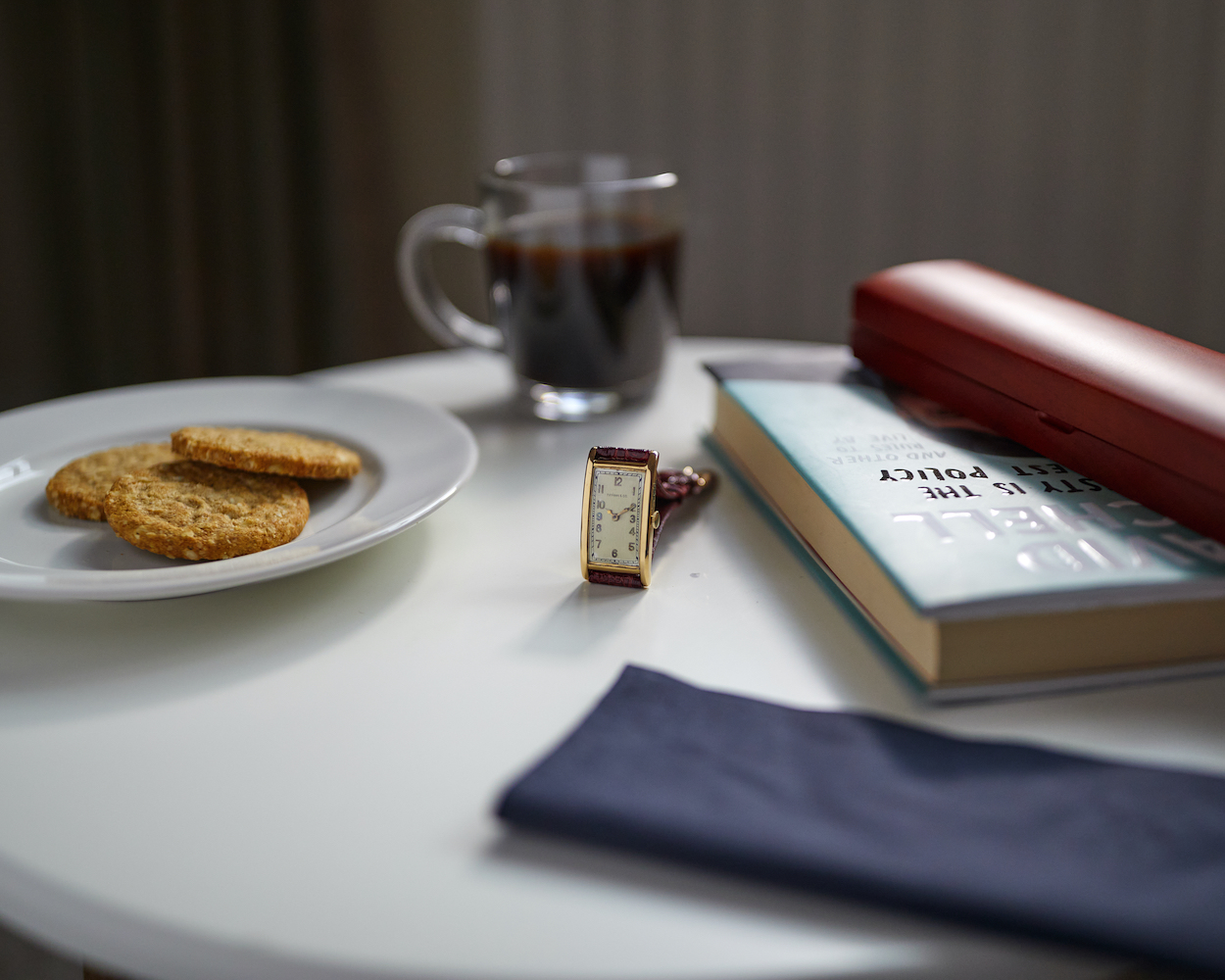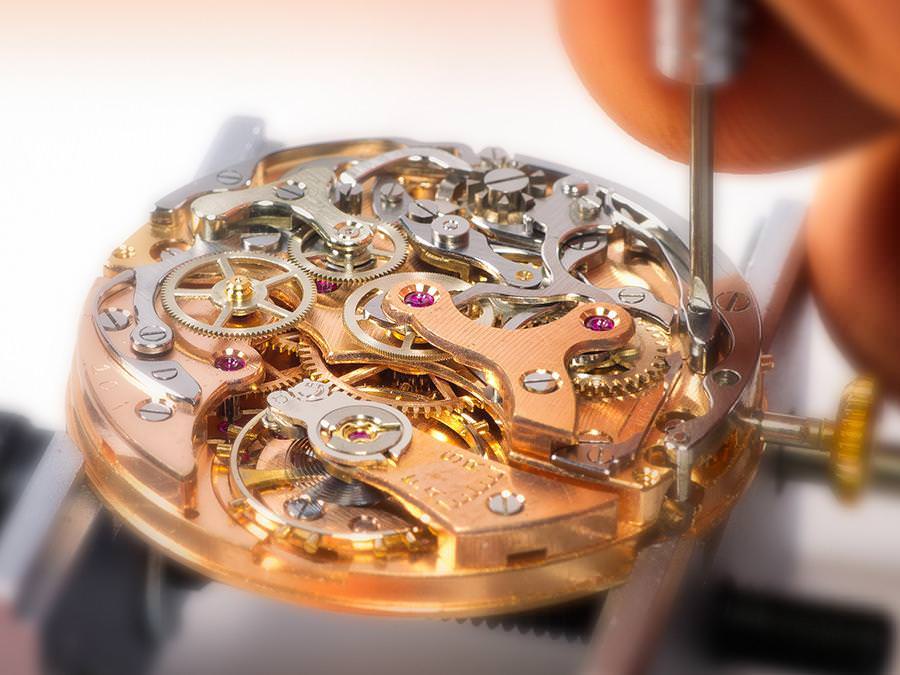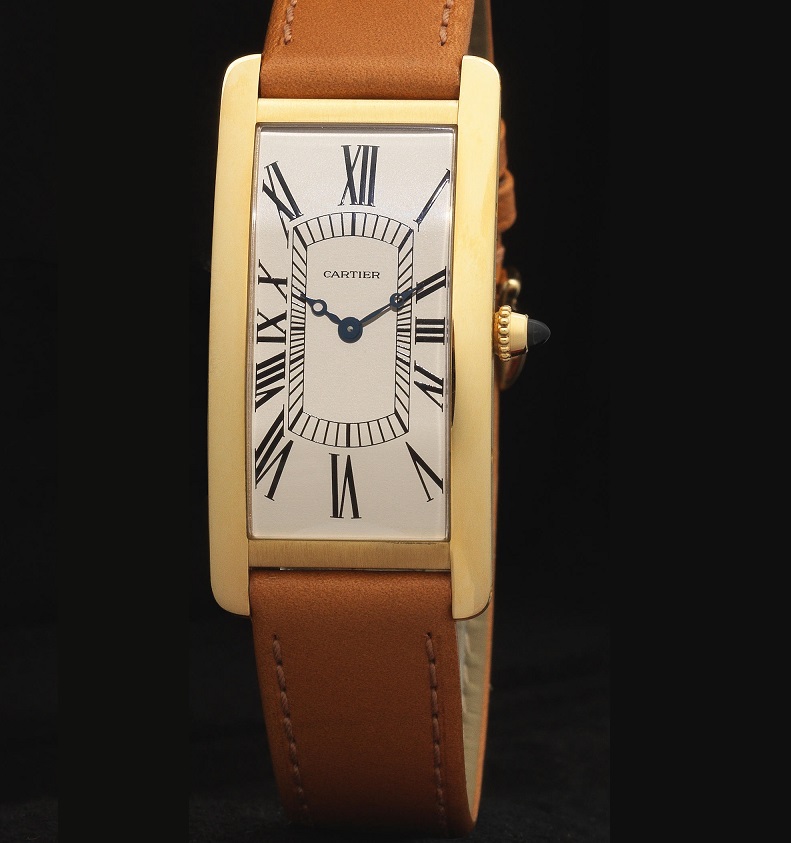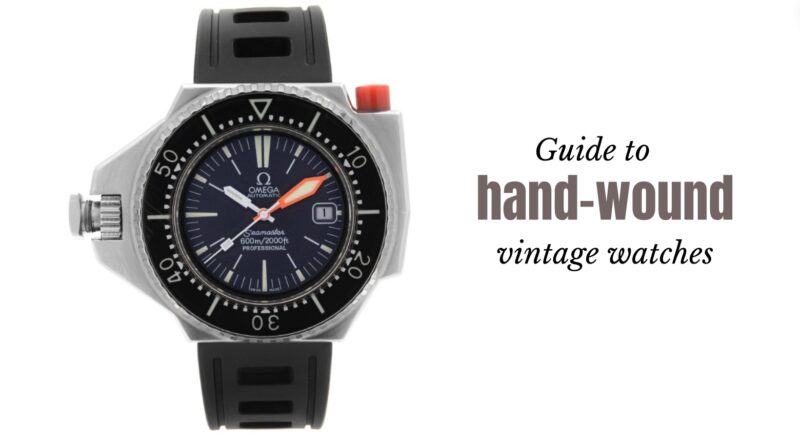Explore Classic, Hand-Wound Vintage Watches
Watch expert Alan Wood, founder of Vintage Gold Watches, offers some advice on choosing a vintage hand-wound watch and some of his favourite makers and models
Classic, Hand-Wound Vintage Watches: An Exploration Of Timeless Timepieces
You may or may not be aware that back in the day, vintage watches had to be hand-wound before wearing them. While this might sound like a cumbersome task in today’s era of convenience, you’ll soon discover that this daily ritual becomes a cherished and distinctive feature once you own a vintage hand-wound watch.
To get technical, manual watch winding involves turning the crown. This transfers energy to the mainspring and sets the gears and escapement in motion, setting off the tell-tale ticking sound indicating your watch is keeping time. After a few days of wear, you will instinctively know when you have ratcheted enough power in the mainspring of the manual-wind movement to last the entire day.
There is still a thriving market for manually-wound watches and new models are produced to this day. You may ask, what is the draw of a manual-wound watch when an automatic watch or a quartz watch is simpler to use? Let’s find out.

A Brief History of Hand-Wound Watches
Hand-wound watches have a rich heritage dating back centuries. Initially, timepieces relied on manual winding, with individuals regularly winding the mainspring using a key or knob. This method persisted until the invention of self-winding or automatic movements in the early 20th century.
The introduction of automatic movements in the early 20th century marked a significant shift in the watchmaking industry. Automatic watches, equipped with rotors that wound the mainspring with the natural motion of the wearer’s wrist, offered unparalleled convenience and ushered in a new era of horological innovation.
Despite the widespread adoption of automatic movements, hand-wound watches retained a devoted following among enthusiasts and collectors. Their mechanical simplicity, timeless elegance, and connection to horological tradition continue to appeal to those who appreciate the craftsmanship and artistry of traditional watchmaking.
Today, hand-wound watches occupy a unique place in the world of horology, cherished for their beauty, heritage, and the ritualistic experience of winding them by hand. Whether as heirlooms passed down through generations or as prized additions to a modern watch collection, hand-wound watches continue to captivate enthusiasts with their enduring charm and timeless appeal.

The Appeal of Vintage Hand-Wound Watches
If you are interested in the inner workings of mechanical watches, a hand-wound watch with a transparent case is a joy to behold.
The transparent case offers a captivating glimpse into the intricate dance of gears and springs as you manually wind the watch. Each turn of the crown becomes a moment of connection with the craftsmanship and engineering marvels of a bygone era.
Moreover, the tactile experience of winding the watch by hand adds a personal touch to your daily routine while building a deeper appreciation for the artistry and craftsmanship behind each timepiece. It’s a tangible connection to a time when watches were more than just accessories—they were cherished heirlooms to be treasured and passed down through generations.
There are also stylistic advantages to vintage hand-wound watches. Without the need for a rotor to wind the mainspring automatically, vintage hand-wound watches boast a sleeker and more refined case design, making them ideal companions for formal attire.

Alan Woods’ Favourite Hand Wound Watches
From watches designed for aviators and pilots, to models made to withstand underwater pressure on a diver’s wrist and the unrivalled accuracy of a chronograph, there’s a vintage watch for everyone.
Favourite Hand-Wound Pilot Watches
Vintage manually-wound pilot watches boast a rich heritage tracing back to the early 20th century. Born out of the necessity for precise timekeeping tools for aviators in the World Wars, these resilient timepieces prioritise legibility and functionality.
Featuring large Arabic numerals and luminescent hands, they ensure swift readability even in dimly-lit cockpit conditions. Their oversized crowns facilitate easy adjustments, accommodating thick leather gloves worn in freezing cockpits. With robust cases and crystals, they shield their movements from harsh environments.
Today, vintage hand-wound pilot watches remain captivating to aviators and collectors alike, thanks to their historical significance, timeless design, and meticulous craftsmanship.
Breguet Type XX
The Breguet Type XX and the classic IWC Mark series, such as the Mark XI are notable examples of these watches. Designed in the 1950s for the French naval air army, the Type XX exudes a military cool, combining legibility with a flyback chronograph function.
IWC Mark XI
The Mark XI was born through a collaboration between International Watch Company (IWC) and Jaeger-LeCoultre (JLC) in 1948. It was crafted to align with British Ministry of Defence (MoD) standards.
Functionality was key, resulting in a classic timepiece built to endure. The IWC Mark XI, with its simplicity and durability, was a navigational tool for RAF pilots. These timepieces symbolise the strong bond between horology and aviation.

Favourite Hand-Wound Diver’s Watches
In the realm of underwater exploration, the first hand-wound diver’s watches blazed a trail. Their popularity propelled in the aftermath of World War II, around the early 1950s. Sporting sturdy water-resistant casings and reliable seals, they swiftly evolved into indispensable equipment for divers.
These timepieces ensured readability with bold luminous markers and clear hands, even in the murkiest depths, enhancing safety and accuracy. Their enduring impact echoes through contemporary dive watches.
Vulcain Cricket Nautical
The Vulcain Cricket Nautical diver, a Swiss marvel, emerged in 1961. An innovative dive watch, it boasted a mechanical alarm for underwater safety, cementing its legacy as a functional and pioneering timepiece.
Officine Panerai Luminor Marina
The Officine Panerai Luminor Marina manual-wound diver is a Swiss masterpiece. Combining heritage with modernity, it features exceptional water resistance, legibility, and a unique crown-protecting bridge, embodying timeless elegance and functionality.
Omega Seamaster Ploprof
The Omega Seamaster Ploprof gained renown for its unconventional appearance and exceptional water resistance. Its striking design combined functionality with style, making a statement both underwater and on land.

Favourite Vintage Manual-Wind Chronographs
Handcrafted chronographs are renowned for their accuracy and adaptability. Whether in the realm of sports or the rigorous requirements of aviation and beyond, these watches are essential. Their hand-wound mechanisms ensure precision, while the chronograph feature allows users to measure time elapsed with exactitude.
Breitling Navitimer Chronograph
The Breitling Navitimer Chronograph, introduced in 1952, transcends time as an aviation icon. With its distinctive slide rule bezel, it became a vital cockpit tool, embodying precision and aeronautical prowess.
The Omega Speedmaster
This fabled beauty became renowned as the “Moonwatch,” and earned its place in history by accompanying astronauts to the lunar surface. It remains a hot collectors’ favourite to this day and new editions are snapped up fast, despite the fact no one has landed on the moon since the early ‘70s.

TAG Heuer Carrera
Motor racing enthusiasts rely on hand-wound chronographs which offer exceptional timing precision for track events. Launched in 1963, the TAG Heuer Carrera embodies racing heritage. Named after the Carrera Panamericana, it revolutionised chronograph design with its clean, legible dial and sporty aesthetics, becoming an enduring symbol of speed and style.
Favourite Enamel and Art Deco Vintage Watches
Vintage watches, meticulously wound by hand and featuring enamel dials and Art Deco motifs, embody elegance in horology. These creations seamlessly blend precise craftsmanship with vibrant enamel work, reminiscent of the Art Deco period.
Drawing inspiration from Art Deco’s geometric precision, these designs harmonise both form and function, showcasing bold lines, symmetry, and intricate details. These watches represent wearable art that captures the essence of a bygone era.
Patek Philippe Calatrava Ref. 2450
With its honey dial, this Art Deco-inspired masterpiece showcases wonderful craftsmanship. Its clean lines, exquisite detailing, and enamel work exemplify timeless elegance.
Jaeger Le-Coultre Reverso
Introduced in 1931, the Reverso was specifically designed to protect the watch from the rigours of playing Polo by reversing it on itself. Its understated but supremely elegant Art Deco contours are groundbreaking, and its reversible casing has elevated it to one of the world’s most identifiable watches. The Reverso has 50 different calibres, including quartz, but more than a few of them are manual-winding.
Cartier Tank Cintrée
An Art Deco icon, the Tank Cintrée features an elegant enamel dial. Its elongated, curved case and minimalist design evoke the era’s aesthetics, blending mechanical precision with artistic allure. The famous tank design was inspired by the shape of World War 1 tanks.

Favourite Hand-Wound Vintage Dress Watches
Manual-wind watches epitomise elegance through their intricate designs and slim profiles. These dress watches unite form and function, a true testament to their craftsmanship.
Omega Cal.30 T2 PC 18ct Pink Gold 1946
This is an exquisite 1946 Cal.30 T2 PC 18ct pink gold dress watch, meticulously restored. The standout feature is its exceptional movement – the renowned Cal.30 T2, a chronometer-grade precision movement with historic triumphs in accuracy trials. Noteworthy attributes encompass the elegantly classic 1940s dial and a splendid 35mm pink gold case, combining to create a truly remarkable timepiece.
Zenith Cal.126-6 18ct Pink Gold 36mm Oversize 1956
Established in 1865, Zenith stands among the oldest watchmakers, distinguished by its continuous in-house movement production—a rarity. A storied legacy of technical triumphs includes a 1929 victory at Kew Observatory, where a Zenith wristwatch clinched accolades with a remarkable sub-0.6-second daily accuracy.
Through the late 1940s and 1950s, Zenith reigned supreme in crafting technically advanced and commercially successful chronograph wristwatches.
The Zenith Cal.126-6 18ct Pink Gold 36mm Oversize 1956 watch boasts a rare 18ct pink gold case, a generous 36mm diameter, and an impeccably preserved movement. An original Zenith-signed gold-plated buckle further enhances its appeal.
Rolex Precision Cal.1210 9ct 1965
The 1965 Rolex Precision is a pristine testament to timeless elegance. This vintage 9ct yellow gold gentleman’s dress watch boasts a silver-white dial adorned with ‘3 – 6 – 9 – 12’ Arabic numerals. Encased in 9ct yellow gold, the 34mm diameter case, reflects a larger dimension for its era, exemplifying superior craftsmanship.
Long Live The Manual-Wound Watch
Despite the rise of automation and the growing popularity of smartwatches among younger generations, the hand-wound watch remains steadfast and, fortunately, shows no indication of fading away anytime soon.
Once threatened by the quartz crisis of the 1970s and 1980s, hand-wound movements have not only persisted but thrived. In an era where manual-drive cars are being replaced by automatic electric vehicles, the enduring allure of hand-wound watches continues to inspire.
About Alan Wood

Alan Wood, founder of Vintage Gold Watches, is a trusted vintage watch dealer with over 35 years of private collecting experience. His deep knowledge and infectious passion for mechanical timepieces have earned him a highly respected reputation in the industry. Vintage Gold Watches, established in 2011, has become a reputable dealer thanks to Alan’s expertise and a skilled team of restorers. Alan’s love for vintage watches started as a young Mechanical Engineer and grew into an obsession. He believes the finest watches were made in the 1950s, ‘60s, and ‘70s, and he is thrilled to share them with others.
If you have any questions about manual-wind watches or would like to see some of the models highlighted here, get in touch with Vintage Gold Watches. Stay up to date on the fascinating world of vintage watches by signing up for their weekly newsletter.


